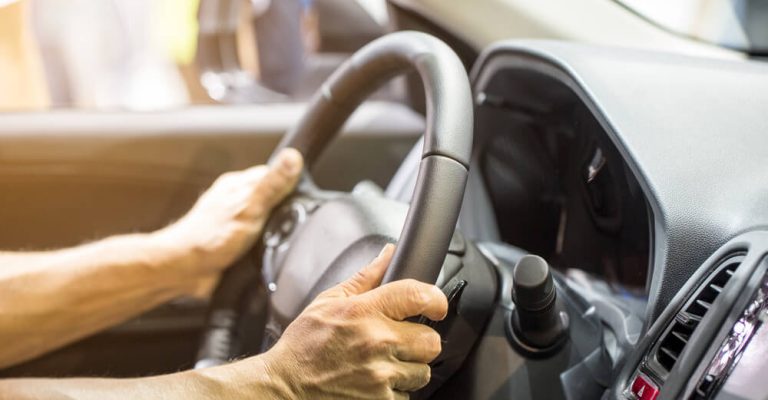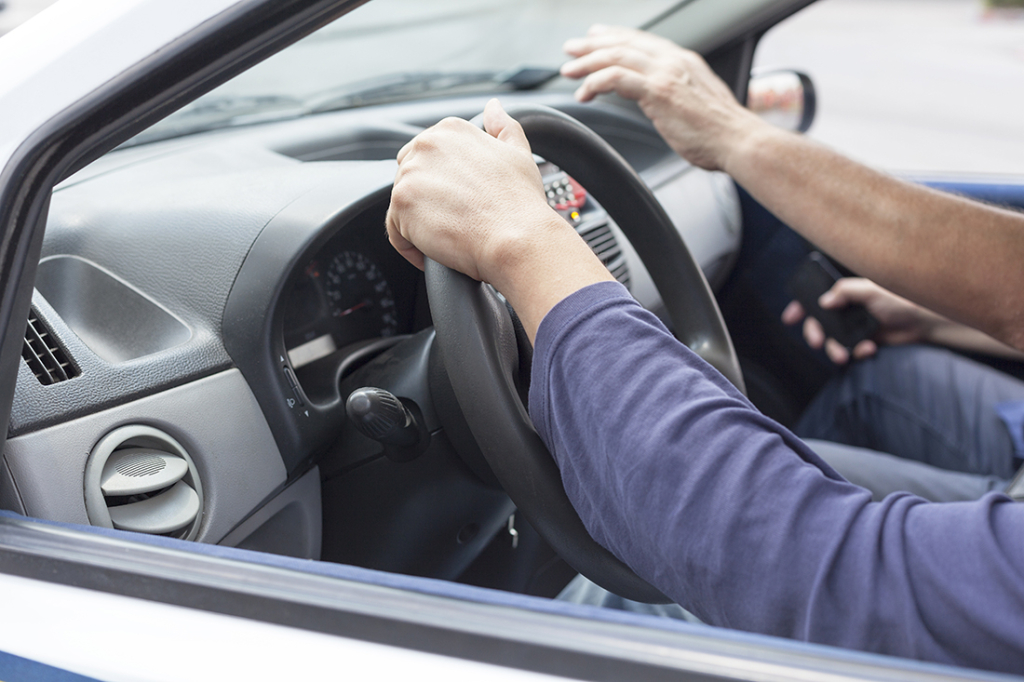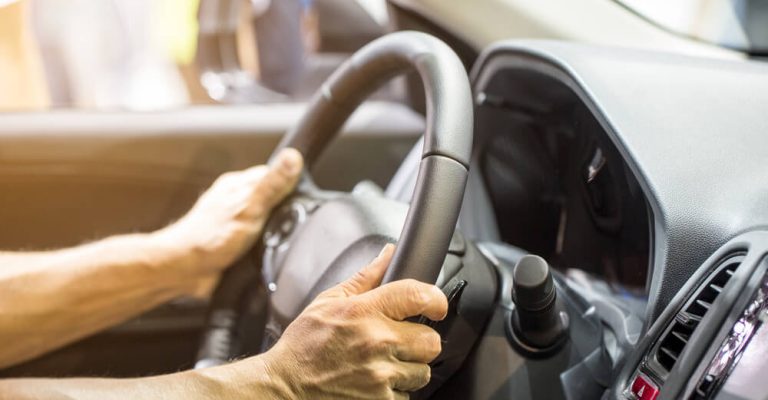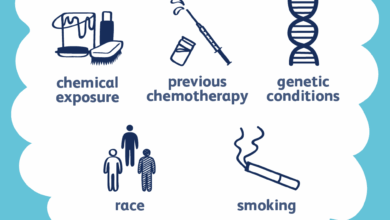
Can you drive after a stroke? This crucial question affects many stroke survivors and their families. Navigating the complexities of medical assessments, rehabilitation, legal considerations, and adaptive driving aids is essential to understanding the path to safe and independent driving. This guide provides a thorough overview of the key factors involved, from the initial medical evaluations to the support systems available for patients and their families.
The journey to regaining driving privileges after a stroke is often a multifaceted one, requiring a combination of medical expertise, personal determination, and access to appropriate resources. This comprehensive guide will delve into the essential considerations surrounding driving after a stroke, offering practical insights and a clearer understanding of the challenges and opportunities that lie ahead.
Driving After Stroke: Can You Drive After A Stroke
A stroke can significantly impact a person’s physical and cognitive abilities, raising important questions about their capacity to safely operate a vehicle. Understanding the potential impairments, the assessment process, and the role of different medical professionals is crucial for determining fitness to drive after a stroke.
Physical Impairments and Driving
Strokes can cause a wide range of physical impairments that directly affect driving. These impairments can vary greatly depending on the location and severity of the stroke, and can include weakness or paralysis on one side of the body (hemiparesis/hemiplegia), difficulties with balance and coordination (ataxia), vision problems (hemianopia), and difficulties with fine motor skills. These impairments can impact various aspects of driving, such as steering, braking, accelerating, and judging distances.
Types of Stroke and Driving Impact
Strokes are categorized into ischemic (caused by a blocked artery) and hemorrhagic (caused by a ruptured artery). The impact on driving can vary significantly depending on the type and location of the stroke. Ischemic strokes often lead to focal deficits, while hemorrhagic strokes can cause more widespread and potentially more severe impairments.
Medical Assessments for Driving Fitness
Determining a person’s fitness to drive after a stroke involves a comprehensive medical evaluation. This evaluation typically includes a neurological examination, assessing motor skills, cognitive functions, and sensory perception. Specific tests may focus on reaction time, visual acuity, balance, and judgment, with adjustments made based on the individual’s specific impairments.
Role of Medical Professionals
Neurologists play a crucial role in evaluating the neurological impact of the stroke, assessing cognitive function and motor skills. Physiatrists specialize in rehabilitation and can assess the patient’s functional abilities, and recommend exercises and therapies to improve driving-related skills. Other specialists, such as ophthalmologists for vision issues or occupational therapists for fine motor skills, may also be involved in the assessment process.
Each specialist brings a unique perspective and expertise, contributing to a comprehensive evaluation.
Stroke Type and Driving Impact Comparison
| Stroke Type | Motor Skills Affected | Cognitive Skills Affected | Driving Impact |
|---|---|---|---|
| Ischemic Stroke (e.g., Thrombotic) | Weakness, paralysis, impaired dexterity in affected limbs, potential issues with coordination. | Attention deficits, memory problems, difficulty with problem-solving, judgment, decision-making. | May struggle with steering, braking, and accelerating. Potential difficulty with safe lane changes or merging. Impaired judgment may lead to risky maneuvers. |
| Hemorrhagic Stroke (e.g., Intracerebral Hemorrhage) | Weakness, paralysis, difficulty with balance and coordination. Possible severe motor impairments. | Significant cognitive impairment is possible, including confusion, memory loss, and impaired judgment. | Significant challenges with driving, including potential loss of control of the vehicle. Driving may be unsafe due to severe cognitive impairment and motor deficits. |
| Transient Ischemic Attack (TIA) | Temporary weakness, numbness, or paralysis in the affected limbs, usually resolving within 24 hours. | Symptoms may include temporary confusion or memory problems. | Driving should be avoided until a thorough evaluation by a physician confirms stability and no further symptoms occur. If driving is restarted, frequent follow-up evaluations are crucial. |
Driving After Stroke: Can You Drive After A Stroke
Driving after a stroke requires careful consideration of the individual’s cognitive abilities. The impact of a stroke extends beyond physical limitations, often affecting crucial cognitive functions essential for safe driving. Understanding these cognitive impairments is paramount in determining a driver’s fitness to operate a vehicle.Cognitive impairments significantly influence a driver’s ability to react appropriately and safely to changing road conditions.
This includes everything from memory lapses that affect route recall to attention deficits that make it hard to focus on the road. Assessing these cognitive functions is crucial for determining if a driver can safely operate a vehicle.
Cognitive Impairments and Driving
Assessing cognitive functions is critical to ensure that a driver can safely react to the complexities of driving. Memory problems, attention deficits, and decision-making difficulties can significantly compromise driving ability.Cognitive tests are vital tools in determining the extent of cognitive impairment after a stroke. These tests assess various aspects of cognitive function, including memory, attention, processing speed, and problem-solving.
Specific Cognitive Tests
A variety of standardized cognitive tests are used to evaluate cognitive abilities after a stroke. These tests provide objective measures of a driver’s cognitive status. Examples include:
- Clock Drawing Test: This test assesses visuospatial skills and executive functions. A patient is asked to draw a clock face showing a specific time. Difficulties in drawing the clock or placing the numbers correctly may indicate impairment in these areas. For instance, a patient might have trouble with spatial reasoning, leading to errors in placing the numbers on the clock face.
- Trail Making Test: This test evaluates attention, concentration, and visual-motor skills. The patient connects numbers and letters in sequence. Slow or inaccurate completion suggests deficits in these cognitive areas. Someone might struggle to switch between tasks quickly, leading to difficulties in following directions on the road.
- Stroop Test: This test measures selective attention and cognitive flexibility. The patient names the color of words printed in different colors. Slow or inaccurate responses suggest difficulties in suppressing irrelevant information, a critical skill for focusing on driving.
Assessing Reaction to Changing Road Conditions
Determining if a driver can safely react to changing road conditions after a stroke involves a combination of cognitive tests and on-road evaluations. Simulated driving scenarios can assess a driver’s ability to respond to unexpected situations like sudden braking or swerving.
The key is to observe how the driver reacts in these simulated scenarios, comparing their response time and accuracy to established norms.
This process also incorporates the evaluation of the driver’s ability to make quick decisions in potentially dangerous situations. Observations on how they react to sudden braking or swerving are recorded and assessed.
Common Cognitive Impairments and Driving Impact
The following table illustrates how various cognitive impairments can affect different aspects of driving.
| Impairment | Driving Task Affected | Example Scenarios |
|---|---|---|
| Memory Loss (e.g., short-term memory) | Route finding, remembering traffic rules, remembering driving instructions | Forgetting the route to work, struggling to remember traffic signals, difficulty following navigation directions. |
| Attention Deficits | Sustained attention to driving, noticing hazards, responding to changes in traffic | Distracted by irrelevant stimuli, difficulty maintaining focus on the road, missing warning signs. |
| Decision-making Problems | Judging distances, making quick decisions in critical situations, processing information rapidly | Difficulty judging the speed of other vehicles, making slow reactions to changing road conditions, hesitation in critical situations. |
| Visuospatial Deficits | Recognizing objects, judging distances, navigating through traffic | Trouble recognizing pedestrians or traffic signs, difficulties with lane changes, difficulty judging distances between vehicles. |
Driving After Stroke: Can You Drive After A Stroke
Recovering from a stroke is a multifaceted journey, and regaining the ability to drive safely is often a significant goal for many individuals. This process involves not just physical rehabilitation but also addressing cognitive and emotional aspects of recovery. A comprehensive approach that integrates various therapies and exercises is crucial for a successful outcome.Driving after a stroke requires a careful assessment of the individual’s abilities, and rehabilitation programs are tailored to address specific deficits.
This often involves a multidisciplinary team, including physical therapists, occupational therapists, and neurologists, working collaboratively to create a personalized plan. The key is to progressively challenge and improve skills, always prioritizing safety.
Physical Rehabilitation Programs
Physical rehabilitation programs play a vital role in restoring or improving motor skills, enhancing mobility, and improving coordination. These programs are designed to address the specific impairments resulting from the stroke, and their effectiveness depends on the intensity, consistency, and individual adaptation of the exercises. Structured exercises, tailored to each patient’s progress, are a crucial part of the process.
Driving after a stroke is a complex issue, heavily influenced by individual recovery and the severity of the stroke. While some might recover quickly, others may face long-term challenges, making driving a potential safety concern. This is further complicated by the recent emboldened stance of abortion opponents, as seen in the Trump administration’s actions, abortion opponents emboldened trump administration actions , potentially affecting healthcare access and further complicating recovery.
Ultimately, a doctor’s assessment and clear medical guidance are essential to determine if driving is safe and appropriate after a stroke.
Exercises and Therapies for Enhanced Mobility and Coordination
A wide range of exercises and therapies are used to improve mobility and coordination. These may include range-of-motion exercises to increase joint flexibility, strengthening exercises to rebuild muscle strength, and balance exercises to improve stability. Specific therapies, such as proprioceptive neuromuscular facilitation (PNF), are used to enhance motor control. Exercises are progressively challenging to build strength and confidence.
Driving-Related Exercises
Driving-related exercises are incorporated into the rehabilitation program to simulate driving actions. These exercises can involve practicing steering movements, using pedals, and judging distances, mimicking real-world driving scenarios. This approach helps patients regain the specific skills needed for safe driving. For example, exercises involving simulated steering wheels, using hand-eye coordination games, and maneuvering a miniature vehicle can be used.
Progression of Rehabilitation and Driving
The progression of rehabilitation is directly linked to the patient’s ability to safely operate a vehicle. Early stages focus on regaining basic motor functions, gradually increasing the complexity of exercises. As the patient improves, the exercises become more sophisticated, mimicking real-world driving situations. A crucial part of this process is regular evaluation by medical professionals to monitor progress and adjust the program as needed.
For example, a patient might start with simple arm exercises, progressing to more complex steering simulations and eventually to a driving simulator.
Physical Exercises for Balance and Reaction Time
Maintaining balance and reaction time is essential for safe driving. A variety of exercises can be incorporated into a rehabilitation program to address these needs. Examples include:
- Balance exercises: Standing on one leg, heel-to-toe walking, and using balance boards can significantly improve stability and reduce the risk of falls.
- Reaction time exercises: Simple games like catching a ball or reacting to visual cues can help improve response time.
- Coordination exercises: Activities that involve simultaneous movement of different body parts, like reaching and grasping, or throwing and catching, improve coordination.
- Walking and gait training: Improving gait and posture, often done in conjunction with physical therapy, can contribute significantly to overall balance and coordination.
- Proprioceptive exercises: These focus on regaining awareness of body position in space, and can be vital in improving balance and reaction time.
These exercises, when consistently practiced, can lead to significant improvements in balance and reaction time, essential for safe driving after a stroke. Regular assessments are vital to ensure the exercises remain appropriate to the patient’s current abilities.
Driving after a stroke? It’s a complex question, and honestly, a lot depends on the individual. New parents, for example, often experience significant sleep deprivation – new parents don’t get sound sleep for 6 years , which can impact their judgment. Similarly, stroke recovery takes time, and regaining the cognitive abilities necessary for safe driving requires careful assessment and rehabilitation.
Ultimately, the decision to drive after a stroke should be made in consultation with medical professionals and taking into account individual progress.
Driving After Stroke: Can You Drive After A Stroke

Driving after a stroke is a complex issue, encompassing physical, cognitive, and emotional considerations. It requires careful assessment and adherence to legal and regulatory frameworks. Individuals must understand the implications of regaining driving privileges, acknowledging the potential impact on themselves and others. This process often involves medical evaluations, legal procedures, and adjustments to personal circumstances.Recovering from a stroke can be a challenging journey, but it is essential to understand the legal and regulatory aspects of regaining driving privileges.
Different jurisdictions have specific rules and procedures, which can vary significantly. This section will explore the legal framework, compare regulations across jurisdictions, and detail the processes involved in regaining driving rights.
Legal Frameworks and Regulations
Legal frameworks for driving after a stroke vary significantly depending on the specific jurisdiction. These frameworks aim to balance the rights of individuals with the safety of other road users. Some regulations mandate specific medical evaluations, while others focus on demonstrating the individual’s ability to safely operate a vehicle. This variability necessitates thorough research and understanding of the local regulations.
Driving Regulations Across Jurisdictions
Driving regulations concerning stroke survivors are not uniform across the globe. Factors like the severity of the stroke, the type of impairment, and the individual’s overall recovery significantly influence the assessment process. For example, a stroke affecting coordination might require a different set of assessments compared to a stroke impacting judgment.
Procedures for Applying for a Driving License, Can you drive after a stroke
The process for applying for a driving license after a stroke involves several steps, varying by jurisdiction. Typically, the application process begins with a medical evaluation to assess the individual’s fitness to drive. This evaluation might include physical examinations, cognitive tests, and driving simulations. The applicant then submits the required documents, including the evaluation results and relevant medical records.
Medical Evaluations Required for Regaining Driving Privileges
Medical evaluations are crucial for regaining driving privileges after a stroke. These evaluations often involve a multidisciplinary approach, encompassing neurologists, rehabilitation specialists, and potentially psychologists. The specific tests and procedures will depend on the nature and extent of the stroke’s impact on the individual’s physical and cognitive abilities.
Legal Requirements for Obtaining a Driving License After a Stroke
| Region | Required Medical Examinations | Licensing Process |
|---|---|---|
| United States (Example: California) | Neurological examination, eye examination, driving simulation test, and possibly psychological evaluation. | Applicant must pass all required medical evaluations, provide necessary documentation, and potentially attend a driving rehabilitation program. |
| United Kingdom (Example: England) | Assessment by a doctor specializing in neurological conditions, along with driving assessment. | Applicant must complete a medical questionnaire, attend a driving assessment, and provide medical records. |
| Canada (Example: Ontario) | Medical examination by a physician specializing in neurology, including a driving assessment. | Applicants must submit their medical records and pass the required driving test and medical assessment. |
| Australia (Example: Victoria) | Assessment by a medical practitioner, often including neurologists or rehabilitation specialists, and a driving assessment. | The process typically involves submitting medical records, completing a driving assessment, and demonstrating an understanding of traffic rules. |
Driving After Stroke: Can You Drive After A Stroke
Navigating the complexities of driving after a stroke can be daunting, but with the right support and adaptations, regaining independence behind the wheel is often achievable. Understanding the various options available for adaptive driving aids is crucial for individuals seeking to resume driving safely and confidently. This section delves into the practical applications of these aids and how they contribute to improved driving outcomes.Adaptive driving aids are essential tools for individuals with stroke-related impairments who wish to maintain their driving independence.
These technologies and modifications provide much-needed assistance, enabling safe and confident operation of a vehicle. The effectiveness of these aids in enhancing driving safety and independence is undeniable, empowering individuals to continue their daily routines and maintain a sense of freedom.
Adaptive Driving Aids and Technologies
Adaptive driving aids offer a wide array of solutions to address specific needs and challenges arising from stroke-related impairments. These aids range from simple modifications to more sophisticated technological advancements, all tailored to enhance driving safety and promote independence.
Driving after a stroke is a complex question, and it really depends on the severity of the stroke and your individual recovery. Just like how drinking and smoking when young can prematurely age your heart here’s a great article on that , your physical and cognitive abilities after a stroke need time to heal. Ultimately, you need to check with your doctor and follow their advice on whether it’s safe to get back behind the wheel.
The selection and implementation of adaptive driving aids should be a collaborative process involving the individual, their physician, occupational therapist, and driving rehabilitation specialist. A comprehensive assessment of the individual’s specific needs and capabilities is crucial for determining the most appropriate and effective adaptations.
Types of Adaptive Driving Aids
A variety of adaptive driving aids cater to different needs and impairments. These aids help to compensate for lost function and facilitate safe and independent driving.
- Hand Controls: These systems replace the need for traditional steering and accelerator/brake pedals. They provide alternative methods for controlling the vehicle, often using levers or joysticks operated by the unaffected hand or arm. The benefits of hand controls are significant in restoring control and allowing drivers to navigate the road safely. These controls offer greater precision and control over the vehicle, particularly when dexterity or strength in the affected limbs is compromised.
- Voice-Activated Systems: These systems allow drivers to control various vehicle functions using voice commands. This is particularly beneficial for individuals with limited hand or arm function. Voice-activated systems can control functions such as radio, navigation, and phone calls, freeing up the driver to focus on the road ahead.
- Special Seating Arrangements: Proper seating is crucial for maintaining a safe driving position. Special seats are designed to provide support and stability, ensuring the driver can maintain an appropriate driving posture and avoid fatigue or discomfort. Custom-designed seating and supportive devices can enhance the driver’s comfort and control.
- Adaptive Pedals and Shifters: These devices are often customized to accommodate various impairments. They provide alternative ways to operate the pedals and gear shift, ensuring a secure and controlled driving experience.
Importance of Proper Fitting and Training
Proper fitting and training are essential components of successful adaptation to adaptive driving aids.
The correct installation and adjustment of adaptive driving aids are crucial for ensuring maximum benefit and safety. A thorough assessment of the individual’s specific needs and abilities is required before any adaptive equipment is fitted. Professionals specializing in adaptive driving aids and vehicle modifications can accurately determine the most appropriate and effective modifications.
Furthermore, comprehensive training is vital to equip the individual with the necessary skills and knowledge to use the adaptive equipment effectively and safely. This training should encompass practical exercises and simulated driving scenarios to allow the driver to become familiar with the equipment and its controls.
Detailed Description: Hand Controls
Hand controls offer a viable solution for individuals with stroke-related impairments impacting their ability to use the steering wheel and pedals.
Hand controls allow for safe and independent driving by providing alternative means of controlling the vehicle’s steering, acceleration, and braking. The specific design of hand controls can be customized to match the driver’s unique needs and preferences. This customization often involves adjusting the position and sensitivity of the controls to accommodate the driver’s remaining motor skills.
Proper training with hand controls ensures that the driver is well-versed in operating the vehicle using these alternative methods. This includes practice with various driving scenarios, such as maneuvering in tight spaces, accelerating and braking, and maintaining lane position.
Driving After Stroke: Can You Drive After A Stroke
Navigating the complexities of driving after a stroke requires a multifaceted approach. It’s not just about regaining physical abilities; it’s about acknowledging the emotional and psychological toll on both the stroke survivor and their family. This journey demands patience, understanding, and a supportive network. The following sections will explore the critical aspects of patient and family support during this process.Comprehensive rehabilitation and support are essential to help stroke survivors and their families adjust to the potential limitations on driving.
This involves understanding the physical and cognitive changes that can affect driving ability, as well as the emotional responses that accompany these adjustments. Open communication and access to reliable resources are vital to navigate this transition effectively.
Patient and Family Support Systems
Supporting stroke survivors and their families requires a network of care beyond the medical team. This involves understanding the importance of emotional well-being, addressing concerns, and providing access to appropriate resources. The road to recovery is often fraught with emotional challenges.
Emotional and Psychological Aspects
Adjusting to driving limitations after a stroke can be emotionally taxing. Survivors may experience feelings of frustration, anxiety, or even depression. Family members might also grapple with concerns about safety and responsibility. Open communication, professional counseling, and support groups can help manage these emotional responses effectively. Recognizing and addressing these feelings is crucial for a successful transition.
Patient Education and Counseling
Patient education plays a vital role in the recovery process. It’s crucial to provide clear and accessible information about driving restrictions, rehabilitation options, and the importance of ongoing monitoring. Counseling is essential for helping individuals and families process their emotions and develop coping strategies. This educational component empowers stroke survivors and their families to actively participate in their recovery journey.
Support Groups and Organizations
Numerous support groups and organizations offer valuable guidance and assistance to stroke survivors and their families. These groups provide a platform for sharing experiences, gaining insights from others facing similar challenges, and receiving emotional support. This network of shared experiences can offer invaluable encouragement and practical advice.
- Stroke Associations: Local and national stroke associations offer comprehensive resources, including support groups, educational materials, and referrals to specialists. They often have extensive networks to connect individuals with local support systems.
- Driving Rehabilitation Programs: Specialized programs focusing on driving assessment and rehabilitation can help individuals safely return to driving if their condition allows. These programs often involve evaluation of cognitive and physical skills, as well as adaptation of driving habits to address any limitations.
- Mental Health Professionals: Therapists, counselors, and psychologists can offer individual or family therapy to address emotional challenges related to driving limitations. This is essential for managing anxiety, frustration, and other emotional responses that can arise.
Resources for Stroke Survivors and Families (Driving)
Accessing reliable resources is crucial for navigating the complexities of driving after a stroke. This includes websites, organizations, and support groups dedicated to providing guidance and support. Comprehensive information empowers individuals and families to make informed decisions about driving and related issues.
| Resource Type | Example | Description |
|---|---|---|
| Websites | National Stroke Association | Provides information, support groups, and resources related to stroke recovery, including driving. |
| Organizations | Local Stroke Support Groups | Offer peer-to-peer support and guidance specific to the local community. |
| Driving Rehabilitation Centers | [Name of a specific center] | Provide assessments and personalized programs to help stroke survivors return to driving safely. |
Final Wrap-Up

In conclusion, driving after a stroke is a multifaceted process that necessitates careful consideration of medical, cognitive, physical, and legal factors. The journey to regaining driving privileges is unique to each individual, requiring personalized assessments, rehabilitation programs, and support systems. Ultimately, the decision of whether or not to drive after a stroke should be made in collaboration with medical professionals, taking into account the individual’s specific needs and abilities.
Accessing appropriate resources and support is critical to ensuring a safe and successful transition.


